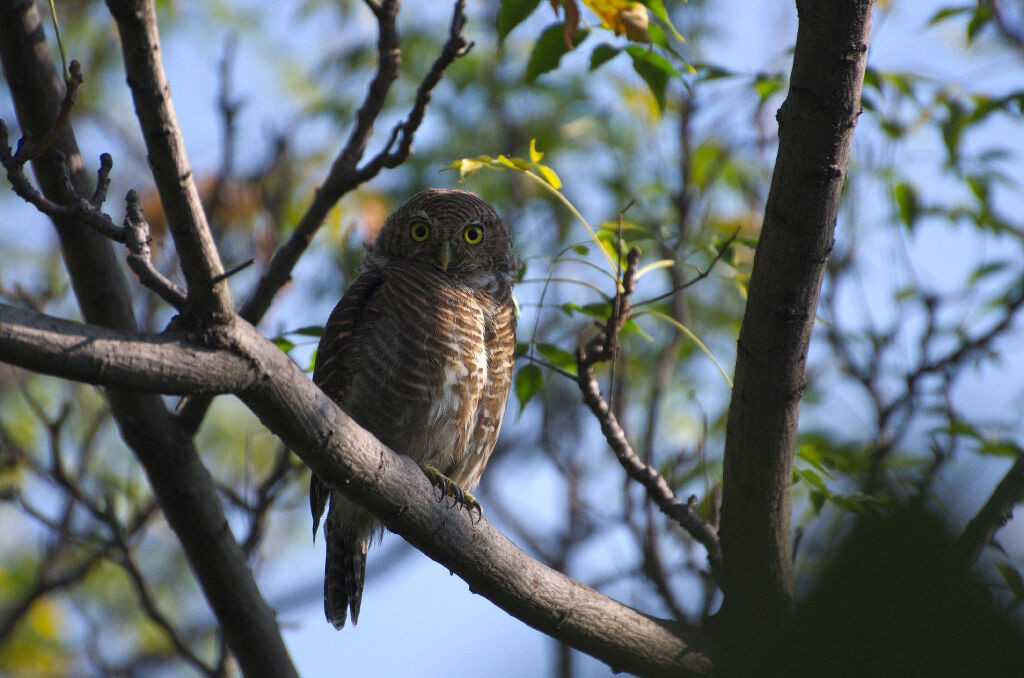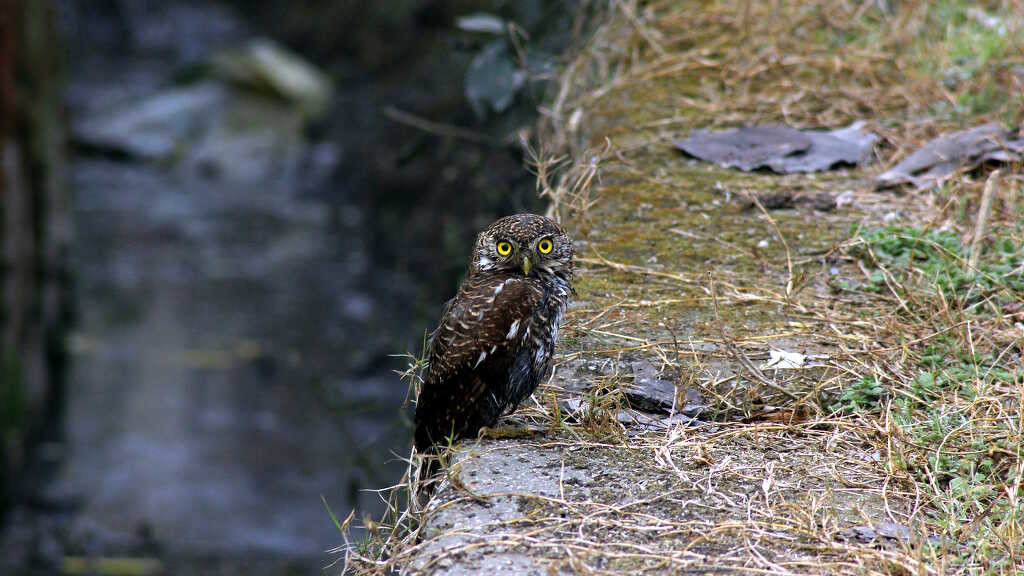
Glaucidium radiatum (Jungle owlet)
The jungle owlet (Glaucidium radiatum) is a small but fierce bird of prey, often spotted in the lower and mid-altitude forests surrounding the Great Himalayan National Park (GHNP). Known for its compact build and barred plumage, the jungle owlet is an essential component of the park’s rich avian diversity. Despite its diminutive size, this species plays a vital ecological role in controlling insect and small vertebrate populations.
Physical Description and Behavior
This owl species has a rounded head with no ear tufts, yellow eyes, and brownish feathers with prominent white barring across the chest and belly. Unlike many owls, the jungle owlet is active during both dawn and dusk, and sometimes even in daylight, making it one of the few diurnal owls in the region. Its repeated, mellow calls can often be heard echoing through the lower forest canopy.
Habitat and Distribution in GHNP
The jungle owlet typically inhabits dense broadleaf forests, wooded ravines, and mixed forest edges, where it nests in tree cavities. In the Great Himalayan National Park, it is more likely to be encountered in the buffer zones or transitional areas such as the lower Tirthan and Sainj valleys, where subtropical and temperate forests intersect. These areas provide ample cover and prey availability, making them ideal for jungle owlets.
Diet and Ecological Role
Feeding primarily on insects, small mammals, and reptiles, the jungle owlet is a stealthy hunter. It uses its excellent camouflage and keen vision to remain undetected until it swoops down on its prey. Its presence is a good indicator of a healthy, balanced forest ecosystem.
| Common name | Jungle Owlet |
| Scientific name | Glaucidium radiatum |
| Family | Tytonidae |
| Description | General effect as of the Spotted Owelt, but dark brown above conspicuously barred (not spotted) with pale rufous. Underparts rufous and white, closely barred with blackish brown. Sexes alike. Singly, in open deciduous forest. Resident in Himachal Pradesh and also common in Shimla area. Crepuscular and nocturnal, but apparently little inconvenienced by sunlight and frequently on the move in daytime. |
Conservation and Protection
While not currently threatened, the jungle owlet benefits from the strict protection measures in place within GHNP. As habitat loss poses a risk in other parts of its range, the undisturbed forest areas in and around the park provide a critical refuge for the species.




